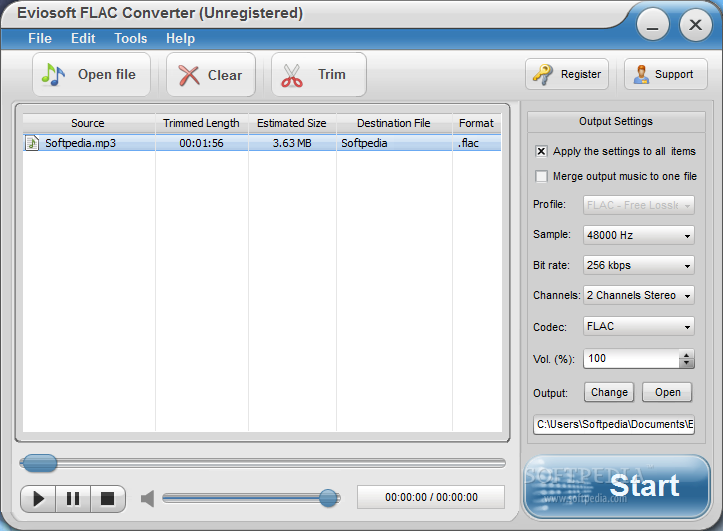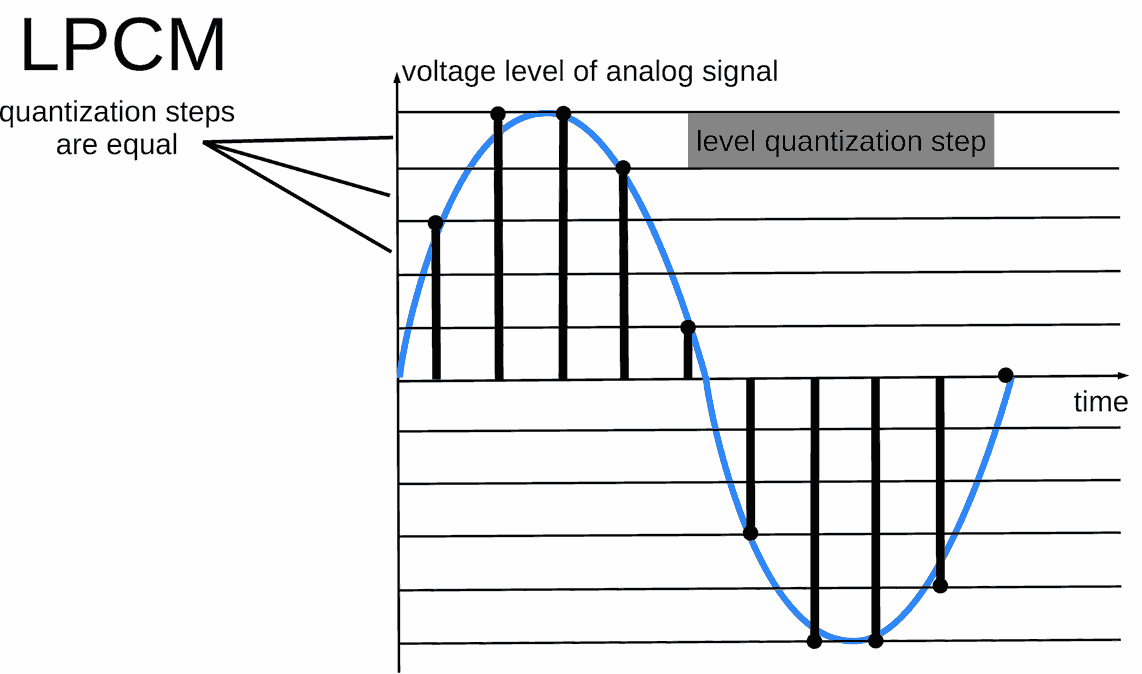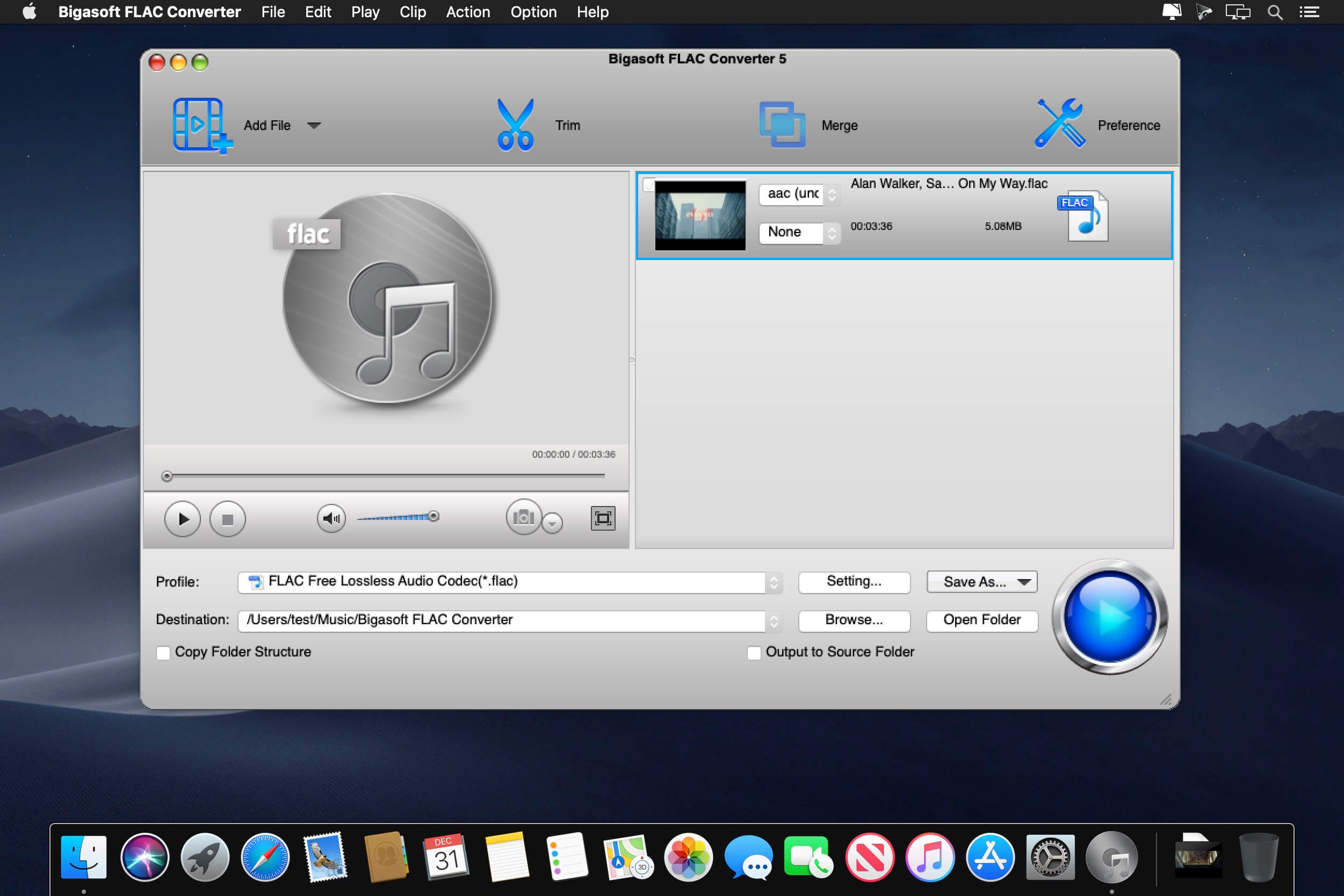

Once again though, it takes a fair bit of CPU power to decode.įor slower machines (older Raspberry Pi’s, as an example) this means conversion is the only game in town for compressed lossless audio soundtracks (it helps that LPCM has been part of the HDMI standard since the beginning in order to allow format decoding on the player). It’s less problematic than DTS-HD, in that it does not contain a core AC-3 stream to re-integrate – rather the lossless version is carried as a stream separate to the lossy version.
#Lpcm to flac converter free
Very few commercial soundtracks exploit the maximum bandwidth available (if you know of any feel free to drop me a line). This is too much for the many devices that cannot push out that much data over HDMI (especially over older pre-1.3 versions of the protocol), and is mostly unnecessary. Due to a quirk of the format the output is always reconstructed at its maximum possible size – 24bit 192kHz with 7.1 discrete channels – with the unused space padded out with silence. If by any chance lossless audio is supported, then the stream must be reconstructed, giving rise to overhead in terms of bandwidth and CPU usage.

Secondly, even if it’s the case that your player and receiver can deal with the lossy (“core”) DTS part of the audio stream (no sure thing – see, once again, the PS4), it is likely that the extra chunks used to restore the missing parts of the audio to recreate the lossless audio stream (added using the “XLL” extension – see section 8 of this document) will be – at best – ignored, as will extra channels beyond 6.1 (see the “XXCH” extension in section 6.4 of the same document). It also lacks some features of FLAC, including error checking.ĭTS-MA has several disadvantages. LPCM is fine, but larger than FLAC due to it’s uncompressed nature (and thus takes up more bandwidth when sending over a network). DTS-X and Dolby Atmos are not covered here, as they are very different, in that rather than being studio-mixed around a certain speaker layout they are mixed at the point of, and to match, the listener’s environment (with the exception of a >=7.1 channel track to provide ambience).

I’ve converted all of these to FLAC for almost all of my rips. Why would I do this? There are three lossless formats generally in wide use at present, uncompressed Linear PCM, and compressed DTS-MA and Dolby TrueHD.

#Lpcm to flac converter how to
So here is a guide on how to create archive versions of your media files containing lossless versions of the soundtracks. The Playstation 4, for instance, won’t even play DTS over the network, let alone DTS-MA or TrueHD. The convenience of being able to play via any of your screens over the network (or just from a USB hard drive) is a giant leap in terms of convenience over carrying huge amounts of DVD/Bluray discs around (literally around the world in my case, having just moved back from Australia after 12+ years – I have crates of them still in storage in Sydney).įormat support can however be spotty, especially when dealing with lossless soundtracks. Having just moved back to the U.K., and being theoretically a gentleman of leisure for a couple of weeks, it’s now – if ever.ĭLNA is fantastically useful.
#Lpcm to flac converter series
NOTE : This is the first in a series of about a decades-worth of notes (not an exaggeration) I’ve been meaning to type up and store somewhere, but haven’t had the/any free time.


 0 kommentar(er)
0 kommentar(er)
